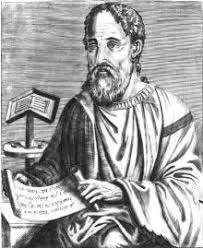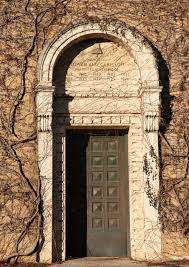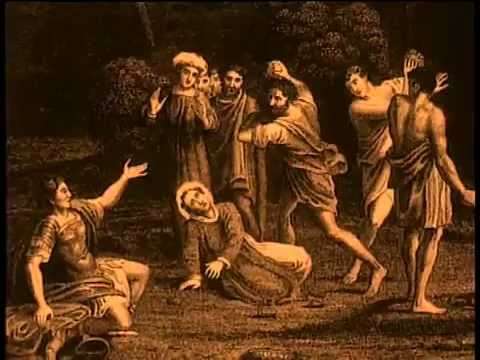

St.Thomas Tradition in the Indian Church and the Impact of Syrian Migrations.
Pr. B. Saji
Who brought Christianity to India? To such a question the historians have different opinions. In fact there are four views among scholars about the origin of Christianity in India.
i) According to the Syrian Christians of Kerala, the foundations of the Church in India were laid by St. Thomas, the Apostle.
ii) Another school of thought is that St. Bartholomew, the Apostle was instrumental in laying the foundations of the Church in India.
iii) A third view is that it was the Christian merchants of the Syrian or Persian church.
iv) And finally, it is also believed that in the 4th century (AD 345) a businessman by name Thomas of Cana from Edessa came to India with 472 families and established the church in India.
Most of the Christians in India hold the view that, Christianity in India is traced back to one of our Lord’s disciples, St. Thomas. The Indian Church therefore claims to be among the oldest churches in Christendom.
According to the Syrian Christians of Kerala, St. Thomas, after visiting Socotra in Yemen, landed at Cranganore (Kodungaluru) on the Periyar estuary north of Cochin in about A.D. 52. He preached the gospel to the Jewish Colony settled there and to have made converts both among them and among their neighbors. He converted many, including members of royal families. Then he travelled to the coastal region southward and founded seven churches, further he ordained presbyters for the churches from four Brahmin families called Sankarapuri, Pakalomattam, Kalli, Kaliankal. Finally he came back to Mylapore, Little Mount (now Chennai) where his preaching aroused the hostility of the Brahmins who raised a riot against him, during which he was speared to death. The year of his martyrdom is said to have been about A.D. 72. He suffered Martyrdom in India and was buried there, later his mortal remains were transferred to Edessa where they were honorably deposited and venerated.
This is the strong belief of the Syrian Christians in India that Thomas the one among the twelve, brought Christianity to India, but unfortunately, they have no solid evidence to prove this without doubt. Their belief rooted on tradition which is not a historical proof. Tradition is a community’s deep-rooted belief which has developed around a kernel of truth. Tradition is a cooked-up story and it is hypothetical.
Here are some validations for the St. Thomas Traditions
(A) Testimonies:- The view of the Church fathers throw some light upon the activities of St. Thomas in India. Their views are not contemporary, and they give very little information about him and they differ in their opinion, their testimonies shed light upon the ministry of St. Thomas. For example: St. Jerome, on the account of the omnipresence of our Lord says “He dwelt in all places, with Thomas in India, with Peter at Rome, with Titus in Crete with Andrew in Achaia with each apostolic men in and all countries.” St. Ephraem who wrote several hymns in honour of St. Thomas which he sings of the apostles preaching of the gospel in India. In one of his hymns he strongly emphasizes St. Thomas ministry in India “Blessed art thou like unto the solar ray from the great orb. The grateful dawn Indian’s painful darkness doth dispel. Thou the great lamp one among the twelve with oil from the cross, India’s dark night floodest with light.’'
(B) Apocryphal Books:
There are some apocryphal stories which give some enlightenment on the account of St. Thomas.
Acts of St. Thomas is another Syrian book to be dated about the middle of the 3rd century. It talks about the life and work of St. Thomas. Another book known as Didascali a Apostolourum. Was probably a book produced inIndia about A.D. 250, carrying a statement which says that “India and all its countries received apostles hand of the priest hood from Judas Thomas who was guide and ruler in the church which he built and ministered.”
Syrian Migrations
Right through these early centuries, the Indian Church was under the jurisdiction of the East Syrian Church. Another bonding formed between these two churches was due to the migration of Syrian Christian families to Malabar. Historical records name trade and persecution as the overall causes of Christian migration. Invigoration and expansion of the Malabar Church.
The First Migration
About 300-400 families under Thomas of Cana migrated to India in about A.D. 345. The first migration took place inthe 4th Century. The first migration was reported by the Jacobite Mar Thomas IV in 1721. He said that when the Indian Church began to decline St. Thomas appeared to the Metropolitan and the King of Edassa (in Syria), in a vision, and asked them to help the weakened Indian Church. Accordingly, Thomas of Cana came with several families and clerics.
Contemporaneous evidence for the first migration come from three sources. The first one is some copper plates with inscriptions about the privilages given to the immigrants. The name of Thomas of Cana does not appear on the Plates available, now, but it may well have been on certain plates which have disappeared. The first source of contemporaneous evidence for the first migration is metal engravings.
Metal engravings
The other two evidences are of a different type:
(a) A colony of Syrians, originally called Mahadevrapatnam, still exists as part of Cranganore.
(b) There is a deep-rooted social distinction in the area, between those who inter-married with the Indian Northists or Vadakumbhagar and those who did not like
Southists of Thekkumbhagar.
The Second Migration
The same 18th C writer, the Jacobite MarThoma IV, also tells of a second migration in AD 823. Several Christians including two Bishops (Mar Sapor and Mar Piruz) were brought by Sabrisho to Kullam (Quilon). They received some land to build a church and a town, and some privileges from King Shakirbirti. Contemporaneous evidence for the second migration comes from a set of five copper plates with inscriptions in Tamil, Malayalam, Pahlavi (Middle Persian) and Arabic, with Jewish Signatures.
The gist of the inscriptions is the grant by the local ruler to the Tarisha community in Quilon of land to build a Church and a town, jurisdiction over the people there and certain revenues and privileges. Tarisha Means “Pure” and implies an already existing Christian community.In some parts Maruwan Saphir also is mentioned.
Apart from the set of five copper plates, there is one single plate in Tamil with an inscription about the granting of the title Manigraman (head of all Christian Merchants in Cranganore) by Vira Raghava Chakravarti to IraviKorttan, of Mahadevarapatanam. The Christian community was also given two castes to serve them, as well as certain tolls and dues. The date of this is probably A.D. 774. This is direct evidence for the existence of a Christian community in the 8th C.
Some historians insist that there was only one migration from Syrian to India which took place in the 9th C. Other evidences of a different nature consists of five stone crosses of the 7th or 8th C found in Madras, Kottayam and other places in India. The Deccan Chronicle, a newspaper records: The inscription on the 7th-8th century stone cross (shown above) is in Pahlavi (Persian) and reads: ‘My Lord Christ, have mercy upon Afras, son of Chaharbukht the Syrian, who cut this.”
What was the impact of the coming of St. Thomas to India
Idolatry is a common practice in India, a land of numerous gods and goddesses, causing people to live in ignorance and turn away from the real God. As Saint Ephraem wrote in one of his hymns that with the coming of St. Thomas, “India’s painful darkness doth dispel. Thou the great lamp, one among the Twelve, with oil from the Cross replenished, India’s dark night floodest with light.”
The arrival of St. Thomas changed the situation, the error of idolatry vanished, many converted to truth and accepted Christ, the sacrament of baptism and adoption of songs. They believed and confessed the Father, Son and Holy Spirit. They preserved the accepted faith of the one God. Through St. Thomas the life-giving splendor arose in all India. Yes, by the coming of St. Thomas, the disciple of Jesus Christ, the Kingdom of heaven took wing and ascended to all its places.





